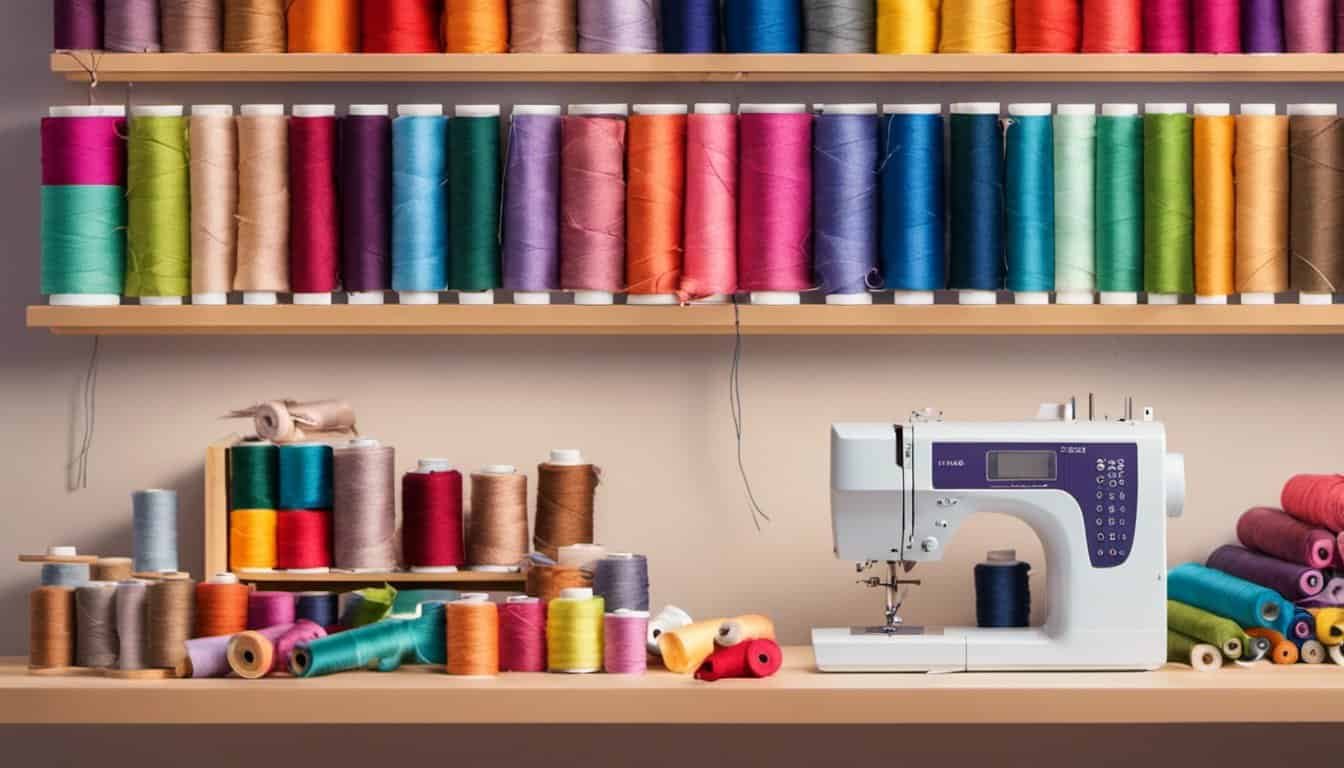Are you passionate about sewing and eager to connect with fellow enthusiasts in your community? Organizing a sewing swap meet can be a fun and rewarding way to share your love for crafting while exchanging materials, patterns, and ideas.
Imagine a vibrant gathering where you and other sewers bring your surplus fabrics, unique patterns, and beloved tools to create a lively, supportive atmosphere. Whether you’re looking to declutter your supplies or find inspiration for your next project, a sewing swap meet offers something for everyone.
With a little planning and the right approach, you can host an event that fosters creativity and builds lasting connections. Let’s dive into the steps you need to organize a successful sewing swap meet that your community will love.
Planning Your Sewing Swap Meet
Organizing a successful sewing swap meet involves careful planning and clear objectives. Follow these steps to ensure your event meets participants’ expectations.
Setting Objectives
Define clear goals for your swap meet. Determine whether you aim to declutter, foster community connections, or provide resources for beginners. Specific objectives help structure the event effectively. For example:
- Decluttering Supplies: Encourage participants to bring excess fabrics, patterns, and tools.
- Community Building: Facilitate interactions among local sewing enthusiasts.
- Resource Sharing: Offer access to rare or specialized patterns and equipment.
Choosing a Date and Venue
- Date Selection: Opt for a weekend to maximize attendance.
- Venue Options: Community centers, local libraries, or craft stores often provide suitable spaces.
- Accessibility: Ensure the location is accessible by public transportation and has ample parking.
Marketing and Promoting Your Event
Promote your sewing swap meet effectively to ensure a great turnout and successful event.
Utilizing Social Media
Leverage social media platforms to reach a wider audience and engage the community.
- Create an Event Page: Use Facebook to set up a detailed event page with date, time, location, and activities.
- Share Regular Updates: Post updates on Instagram and Twitter about event highlights, guest speakers, and special offers.
- Use Hashtags: Incorporate relevant hashtags like #SewingSwapMeet, #CraftCommunity, and #DIYProjects to increase visibility.
- Engage with Groups: Join and post in local crafting groups on Facebook and Reddit to attract interested participants.
- Encourage Sharing: Ask attendees to share the event on their profiles to expand your reach organically.
Creating Promotional Materials
Design and distribute materials that clearly communicate your event details and attract participants.
- Flyers and Posters: Create eye-catching designs with essential information and place them in community centers, libraries, and local shops.
- Email Newsletters: Send newsletters to local crafting clubs and mailing lists with event details and registration links.
- Digital Ads: Invest in targeted ads on social media platforms to reach specific demographics interested in sewing and crafts.
- Print Materials: Distribute brochures and bookmarks at fabric stores and craft supply shops to capture the attention of hobbyists.
- Signage at Venue: Ensure your venue has clear signage directing attendees and providing event information.
Managing Inventory and Logistics
Efficient inventory and logistics are crucial for a seamless sewing swap meet. Proper management ensures that participants find what they need and enjoy the event.
Handling Donations
- Collection: Set up designated drop-off points before the event. Use clear signage to guide donors on where to leave their items.
- Sorting: Categorize donations by type—fabrics, patterns, tools, and accessories. This organization simplifies the swapping process.
- Quality Check: Inspect items for condition. Remove damaged or unusable items to maintain the meet’s standards.
- Storage: Use labeled bins or shelves to store sorted items. Ensure the storage area is clean and easily accessible on the event day.
Organizing Items for Swap
- Display Setup: Arrange items in clearly marked sections. Use tables, racks, or shelves to showcase fabrics, patterns, and tools separately.
- Labeling: Clearly label each category and subcategory. Include details like fabric type, pattern size, or tool specifications to help participants navigate easily.
- Flow Management: Design the layout to allow smooth movement. Position high-demand items in accessible areas to prevent congestion.
- Staffing: Assign volunteers to manage each section. They can assist participants, answer questions, and ensure items remain organized throughout the event.
Engaging Participants and Ensuring Success
Attracting and maintaining participant interest ensures a thriving sewing swap meet. Implement strategies to encourage active involvement and a positive experience.
Setting Rules and Guidelines
Establish clear rules to maintain order and fairness. Define acceptable items by category, condition, and quality standards. Limit the quantity each participant can exchange to ensure variety. Communicate policies on item returns and disputes upfront. Assign roles for volunteers to enforce guidelines consistently. Display rules prominently at the venue and include them in promotional materials.
Providing a Comfortable Environment
Create a welcoming space to enhance participant satisfaction. Arrange ample seating and workspace for browsing and negotiating swaps. Ensure good lighting and ventilation for a pleasant atmosphere. Provide refreshments to keep attendees energized and engaged. Set up signage for easy navigation and information access. Offer accessible facilities, including restrooms and parking, to accommodate all guests.
Post-Event Follow-Up
Thank Your Participants
Send a thank-you email to all attendees within 48 hours. Express gratitude for their participation and contributions. Include highlights from the event to reinforce positive experiences.
Gather Feedback
Create a short survey to collect feedback. Ask about what they enjoyed, areas for improvement, and suggestions for future events. Use tools like Google Forms or SurveyMonkey for easy distribution.

Share Event Highlights
Post photos and a summary of the event on your social media platforms. Tag participants and encourage them to share their own pictures. This keeps the community engaged and showcases the event’s success.
Review Inventory and Logistics
Assess the items that were swapped and remaining inventory. Organize any leftover materials for future use or donation. Evaluate the logistics to identify what worked well and what requires adjustment.
Maintain Community Engagement
Stay connected with attendees by creating a dedicated group on social media or via email newsletters. Share upcoming events, sewing tips, and project ideas to keep the momentum going.
Plan for the Next Event
Start planning early for your next swap meet. Use the feedback gathered to enhance the experience. Set tentative dates and begin promoting to maintain interest and ensure continued participation.
Acknowledge Volunteers
Thank your volunteers individually and highlight their efforts publicly. Consider small tokens of appreciation, such as certificates or shout-outs on social media, to recognize their contribution.
Update Your Records
« 10 Expert Tips on Working with Wool Fabric for the Warmest Projects Ever
You Won’t Believe These 10 Ways to Stop Fabric Fraying During Sewing »
Keep detailed records of attendance, inventory, and feedback. This information helps in planning future events more effectively and tracking the growth of your sewing community.
Address Any Issues
If any issues arose during the event, address them promptly. Communicate with affected participants to resolve concerns and demonstrate your commitment to improvement.
Celebrate Successes
Highlight the successes of the swap meet, such as the number of items exchanged or new connections made. Share these achievements with your community to build enthusiasm for future events.
Conclusion
Hosting a sewing swap meet is a fantastic way to connect with fellow enthusiasts and breathe new life into your crafting journey. You’ll not only declutter your supplies but also discover unique materials and fresh ideas for your projects. Seeing everyone share their passion creates a warm and inspiring atmosphere that’s hard to find elsewhere.
As you plan your next swap meet, remember to keep things organized and welcoming. Your efforts will pay off through the strong sense of community and the joy of exchanging treasures. Embrace the experience and watch your sewing circle grow. Happy swapping!


















